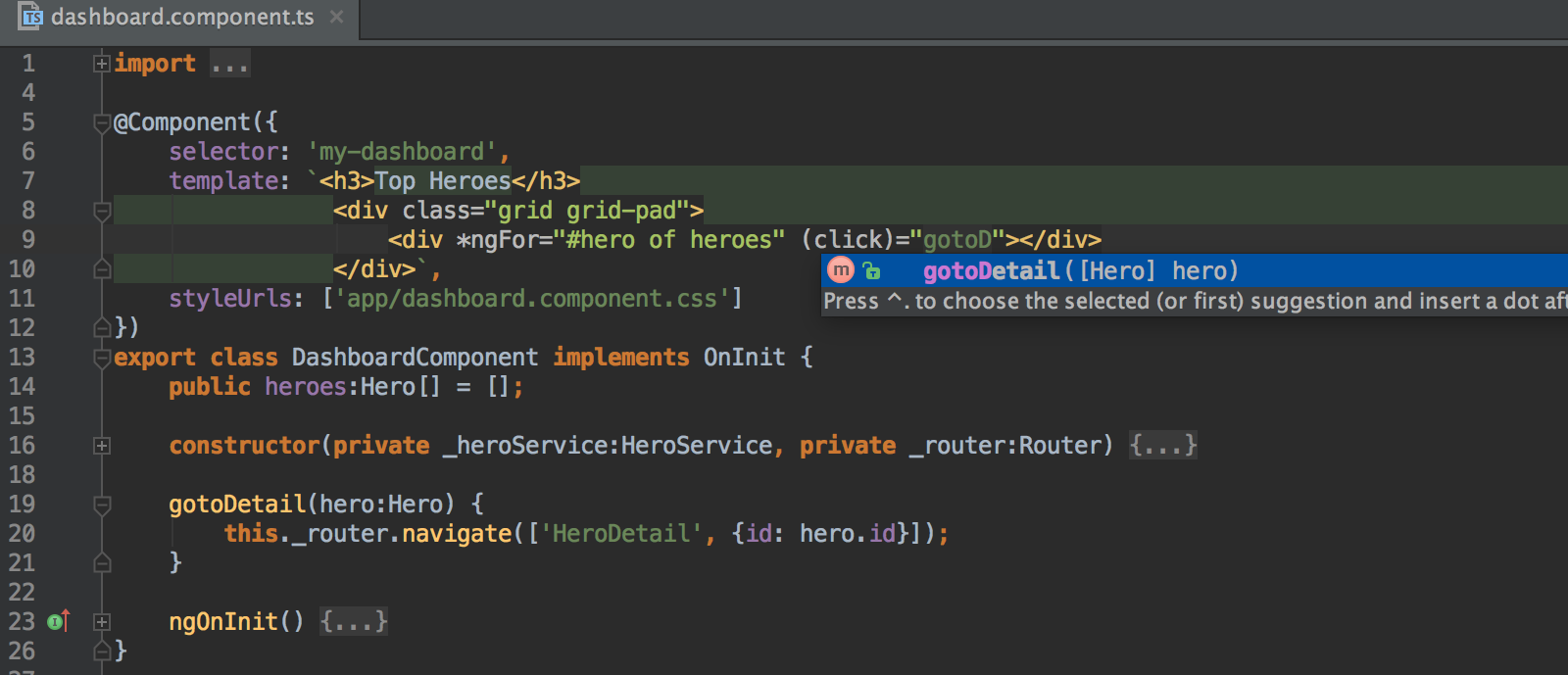
In the JavaScript File field, specify the path to the main file of the application that starts it (for example, bin/www for Express applications). The Run/Debug Configuration: Node.js dialog opens. In the Edit Configuration dialog that opens, click on the toolbar and select Node.js from the context menu. The default location for yarn is /opt/yarn-5, for example, /opt/yarn-v1.22.5.įrom the main menu, select Run | Edit Configurations. Learn more from the pnpm official website. usr/local/pnpm-global//node_modules/pnpm for installation through curl ( curl -f | node - add -global pnpm). usr/local/lib/node_modules/pnpm for installation through npm. The default location for pnpm depends on the installation method: The default location for npm executable is /usr/local/lib/node_modules/npm. WebStorm detects its location automatically.Īlternatively, specify the location of the required package manager manually.
#ANGULAR WEBSTORM DEBUG INSTALL#
The default project package manager is used automatically for managing dependencies, for example, when you run install from a package.json file or install third-party tools, such as ESLint, Prettier, and so on.įrom the Node interpreter list, select the configuration to use by default in the current project.įrom the Package manager list, select the alias associated with the package manager to use. WebStorm automatically uses the default project interpreter every time you select the Project alias from Node Interpreter lists, for example, when creating run/debug configurations. Specify the default Node.js interpreter and package manager in a project Learn more from Specify the default Node.js interpreter and package manager in a project. To do that, specify the location of the package manager in the Package manager field. To use the package manager associated with the new interpreter for managing your project dependencies, set this package manager as default in your project. WebStorm automatically uses this interpreter every time you select the Project alias from Node Interpreter lists, for example, when creating run/debug configurations. To set the newly configured interpreter as project default, select it in the list and click OK to return to the Node.js dialog.

Press Browse and create a list of configuration files in the Docker Compose Configuration Files dialog, that opens.įrom the Service list, select the service to use:Ĭlick OK to return to the Node.js Interpreters dialog where the new interpreter is added to the list. In the Configuration files field, specify the docker-compose configuration files to use. In the Configure Node.js Remote Interpreter dialog that opens, select Docker Compose.įrom the Server list, select the Docker configuration to use.Īlternatively, click New next to the field and configure a Docker server as described in Enable Docker support. In the Node.js Interpreters dialog with a list of all the currently configured interpreters, click on the toolbar and select Add Remote from the context menu. Open the Settings dialog ( Control+Alt+S) and go to Languages & Frameworks | Node.js.Ĭlick next to the Node interpreter field.

See npm, pnpm, and yarn with Docker, Test your application, and ESLint with Docker below.Ī remote Node.js interpreter that you configure right in the Node.js run/debug configuration can be used only with this run/debug configuration. As a result, you can not only run and debug your app with configured Node.js interpreter in Docker but also manage your project dependencies, run tests, and lint your code. In this case you can set the interpreter and the associated package manager as default for your project.

The recommended way is to configure a remote Node.js interpreter in the Settings dialog. You can open this dialog from the Node.js page of the Settings dialog or later, when you create or edit a Node.js run/debug configuration for running or debugging your application. Node.js interpreters in Docker are configured in the Configure Node.js Remote Interpreter dialog. Make sure the JavaScript Debugger, Node.js, Node.js Remote Interpreter, and Docker required plugins are enabled on the Settings | Plugins page, tab Installed, see Managing plugins for details.ĭownload, install, and configure Docker as described in DockerĬonfigure a Node.js interpreter with Docker Compose This enables you to perform efficient development and testing in a dynamic environment, similar to production. Each service can be scaled by adding more containers if necessary.
#ANGULAR WEBSTORM DEBUG CODE#
For example, you can run a web server, a backend database, and your application code as separate services. Docker Compose is used to run multi-container applications.


 0 kommentar(er)
0 kommentar(er)
